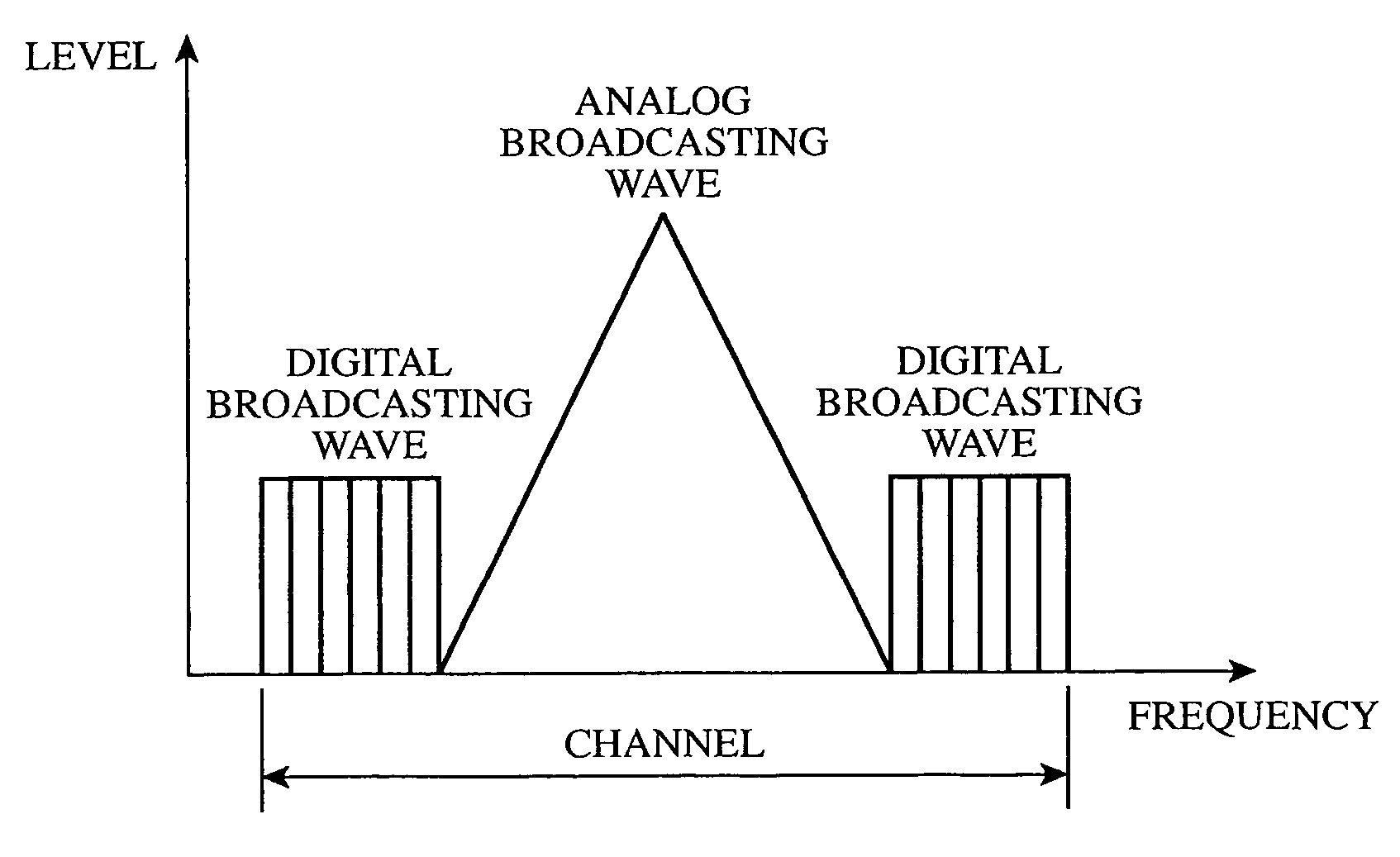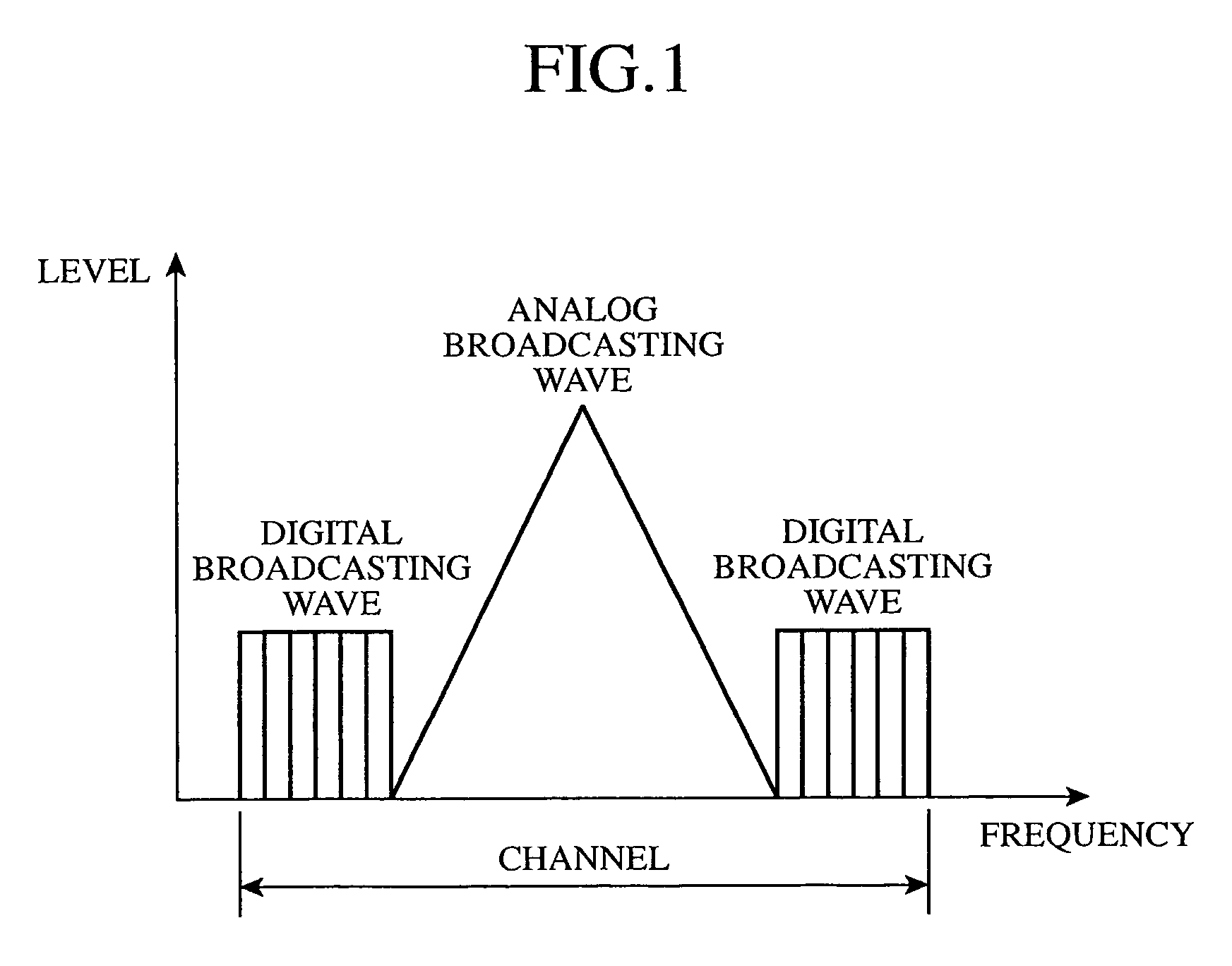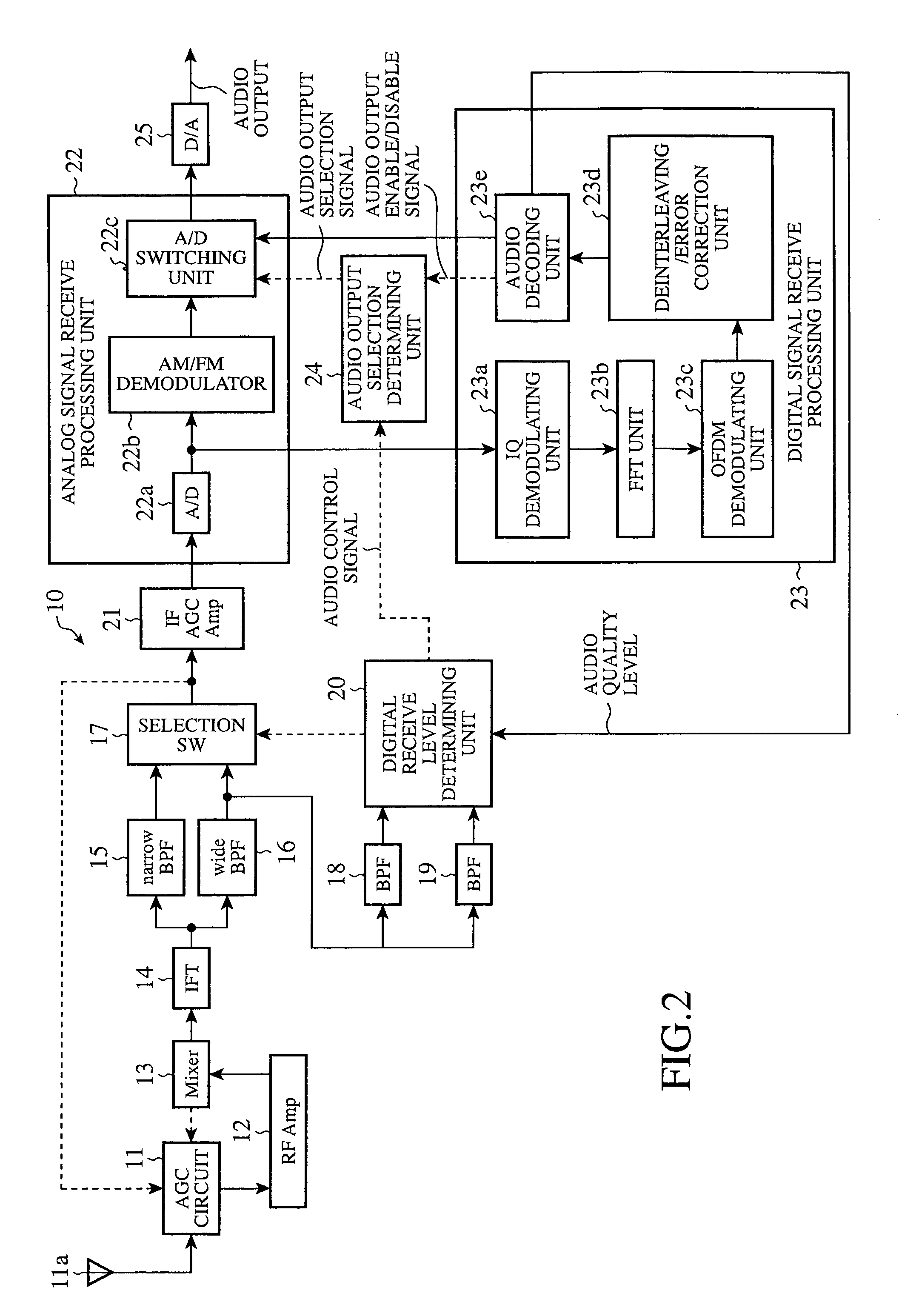Receiver
a receiver and receiver technology, applied in the field of receivers, can solve the problems of reducing the level of the signal component associated with analog broadcasting, affecting the reception status, and worsening of the wave, so as to prevent the s/n ratio from decreasing
- Summary
- Abstract
- Description
- Claims
- Application Information
AI Technical Summary
Benefits of technology
Problems solved by technology
Method used
Image
Examples
embodiment 1
[0022]First, a system in which analog broadcasting waves and digital broadcasting waves are simultaneously transmitted will be explained with reference to FIG. 1 by taking an IBOC system as an example. FIG. 1 is a diagram showing a power spectrum distribution at a time of transmission of analog broadcasting waves and digital broadcasting waves in the IBOC system. In FIG. 1, the horizontal axis shows frequencies and the vertical axis shows the intensity (i.e., level) of the power spectrum of the broadcasting waves.
[0023]The horizontal axis shows an offset from the center frequency of an analog broadcasting wave (for example, an FM signal audio broadcasting wave) which is set to a point of origin. A digital broadcasting wave is transmitted using a frequency range between analog broadcasting waves, and the digital broadcasting wave has the same center frequency as the analog broadcasting waves and has a power spectrum which is distributed outside the power spectrum of an analog broadca...
PUM
 Login to View More
Login to View More Abstract
Description
Claims
Application Information
 Login to View More
Login to View More - R&D
- Intellectual Property
- Life Sciences
- Materials
- Tech Scout
- Unparalleled Data Quality
- Higher Quality Content
- 60% Fewer Hallucinations
Browse by: Latest US Patents, China's latest patents, Technical Efficacy Thesaurus, Application Domain, Technology Topic, Popular Technical Reports.
© 2025 PatSnap. All rights reserved.Legal|Privacy policy|Modern Slavery Act Transparency Statement|Sitemap|About US| Contact US: help@patsnap.com



